Living with a dog who marks inside your home can be aggravating and, frankly, pretty gross. You adore your furry leg-lifter, but his urine-marking habit is stinking up the place and possibly damaging your furniture or belongings.
If you’re feeling exasperated by your pup’s pee, don’t despair! We’ll explain some of the reasons why dogs mark and lay out steps you can take to address the problem below.
But first, we need to distinguish between marking and normal urination habits.
Marking vs Peeing: What’s the Difference?

How can you tell if your dog is marking or having a potty accident indoors? Here are a few key factors that can help you tell the difference.
- Duration: Marking is usually brief, lasting just a few seconds at the most, while peeing takes a longer time.
- Volume: When a dog marks, he releases just enough urine to leave a scent. But when a dog pees, he is emptying his bladder, so there will be a lot more urine.
- Age: Young puppies do not mark. Typically marking behavior shows up at the onset of adolescence, between 6 and 8 months of age. Puppies and senior dogs (which are between 7 and 11 years old, depending on the size of the dog) are more likely to have potty accidents as it can be hard for them to hold their bladder.
- Location: This sign isn’t as straightforward as the others, but it can be useful to consider. Often marking is done on a vertical surface, such as a piece of furniture or wall. It can also happen on a specific object, like a pillow or a purse, though some dogs will mark on the ground. Peeing usually occurs on the ground, though some doggos will pee on a vertical surface at times. Look at the other factors along with the location of the urination to help determine if it’s marking or peeing.
Marking is a communication strategy. The scent of the urine contains information about his age, health, and reproductive status, as well as how he’s feeling emotionally, through pheromones.
When a dog pees, he’s simply emptying his bladder. So while both involve releasing urine, the function of these two behaviors is completely different.
Since they can seem similar, use the list of signs to help you assess whether your pup is marking or pottying. If you’re still having a tough time understanding your dog’s urination, consult with your veterinarian or a certified dog behavior consultant.
Is Marking Bad? Should It Be Stopped?

Marking is a normal, natural dog behavior for both male and female dogs.
Like many other canine behaviors, such as chewing and barking, if it’s channeled appropriately, it’s not a problem.
Chewing on a KONG? Fine.
Chewing your shoes? Not OK.
Marking outdoors? Go for it.
Marking indoors? No way.
If your dog is marking outdoors, such as on trees and rocks, there’s really no need to try to stop the behavior. While it may seem gross, your dog is communicating. Some folks refer to it as “pee-mail,” since he’s leaving behind little messages for other pooches to interpret.
That said, your neighbors probably wouldn’t appreciate your dog marking on parked cars or mailboxes. If you see him sidling up to an inappropriate marking surface outside, hurry him along and encourage him to go somewhere else.
My whippet used to try to lift his leg on the neighbor’s perfectly landscaped flower beds, but with consistent interruption and redirection, he now trots right on past them.
Marking becomes problematic when it happens indoors, and in this context, it should be stopped. Indoor urination can stink up a home and ruin furniture, decor, and belongings. It can quickly become a smelly, destructive, and expensive issue. And it can cause you to resent your four-footer.
If you’re visiting a friend or family member’s home or staying at a vacation rental with your dog, marking is a big no-no. A dog who marks is not a welcome guest, which might mean he misses out on some activities.
The sooner you can deal with the issue, the easier it will be to stop the behavior and preserve your home and belongings. It’s better to intervene immediately than to wait and see if it becomes a pattern.
Why Do Dogs Mark in the House?
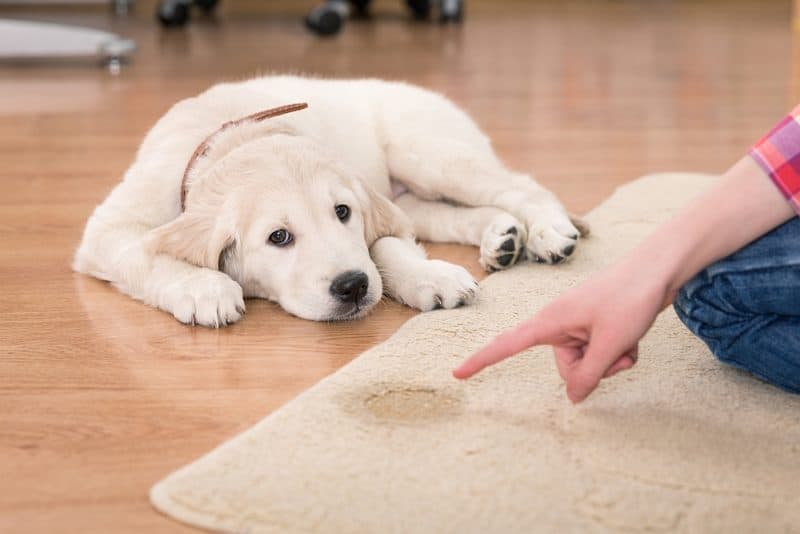
All dog behaviors have a purpose, even the ones we find annoying like marking. And I can assure you the purpose of marking isn’t to piss you off (heh), though it may sometimes feel that way.
We’ve explained that marking is a form of olfactory communication, but what exactly prompts him to lift his leg in the house?
Here are some of the reasons dogs mark indoors:
- Hormones: As a pup’s hormones change during adolescence (around 6 to 8 months of age), he might start marking, both outdoors and indoors. While this is more common in males, it can happen in females too. Additionally, a female in heat might begin to mark, to let others know she’s coming into season. And a male who can smell a female in heat nearby may also lift his leg indoors.
- Indication of territory: Dogs use marking to communicate messages of “I was here,” and “this belongs to me.” Sometimes he may feel the need to label his territory inside your home. This doesn’t necessarily mean your dog is aggressive or trying to “dominate you” though.
- Stress: An anxious dog may try to communicate his feelings through marking. Of course, humans can’t detect the scent of stress, but it’s his way of communicating anxiety or frustration.
- Social shifts: The addition of a new pet, a newborn baby, or a roommate might trigger marking. Changes to the social dynamic can be confusing and stressful for a dog, and marking is his way of “talking” about it.
- Other dogs’ scent: The smell of another dog in a home can cause him to mark. Perhaps you have a doggy friend over to play, and you’re surprised when your pup lifts his leg and pees on the couch where his friend was hanging out earlier. Or you stay at a dog-friendly cabin and your dog marks a spot on a rug, where another canine guest had peed.
- Household dynamics: If you have multiple dogs, marking might be used as a communication tool among your pack, especially if there is tension between two or more pups.
- Lack of familiarity: Some dogs might mark if an item or space doesn’t smell familiar to them. A pup may lift his leg on a new chair you brought home, or in the hotel room you’re staying in. A newly adopted dog might mark in an attempt to create a more familiar scent in an otherwise brand-new environment.
- Health issues: In some cases, marking can be caused by illness.
How to Stop a Dog from Marking in the House?
How can you teach your piddling pup that it’s not okay to mark indoors, only outdoors?
Here are some strategies to stop your canine from marking inside your home. Since each dog is a unique individual, you may find that a combination of approaches is the best plan of action.
Consult Your Veterinarian
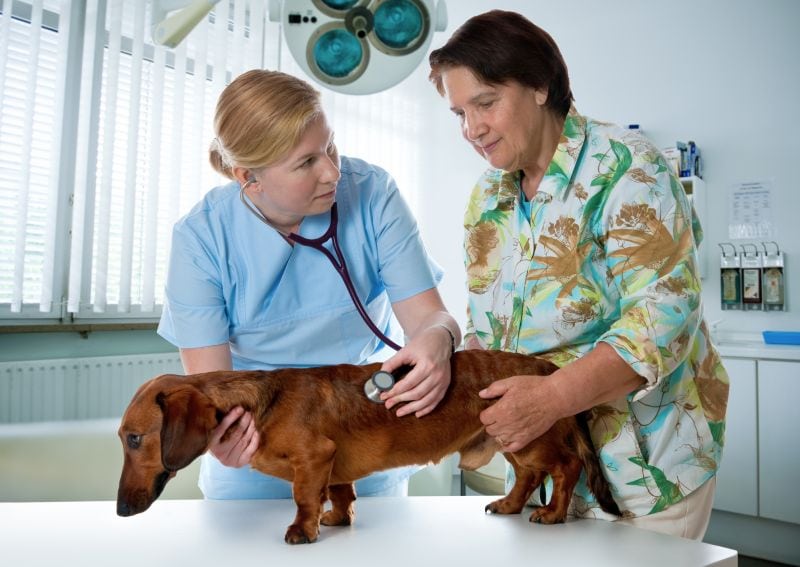
Whenever you’re dealing with a behavior issue, especially if it’s a new problem, you should talk with your veterinarian. A health concern may be at the root of the marking issue, and without treatment, you won’t be able to resolve the unwanted urination.
Even if you feel like your pup is perfectly healthy, consult your vet to rule out any possible medical problems that may be contributing factors. Once he’s been given a clean bill of health, you can move on to implementing some of these other steps to stop the marking.
Need to speak with a veterinarian? Check out 14 places you can schedule an online vet visit!
Clean Up Urine Spots

If there are spots around your home that still smell like urine, your dog will likely continue marking. So it’s critical to thoroughly clean any spots if you want to get rid of marking.
Keep in mind that even though you may not smell pee, your dog has a much keener nose and will be attracted to any spots where he can still pick up a urine scent.
Use an enzymatic or oxidizing cleaner to fully remove urine stains. Some surfaces or items can be tough to clean in DIY fashion, so consider professional cleaning services for those.
Supervise Your Marking Mutt

Dogs who mark need to be actively monitored if they are loose in the house. Supervision is key for a few reasons.
First, if you see your dog looking like he’s about to lift his leg, you have an opportunity to interrupt him. We’ll get more into how to do this in a bit. If you aren’t there to redirect him, you miss out on a valuable training opportunity.
Additionally, the more your dog is allowed to rehearse marking, the more likely he is to continue the behavior. You don’t want peeing indoors to become a well-established habit, so keeping a close eye on him is critical.
Lastly, if your dog marks behind your back, you might not know to clean it up. And as we discussed, removing the urine scent is very important for stopping marking altogether.
So if your dog is going to be loose in spaces you suspect he will mark, make sure he is closely supervised. This means keeping both eyes on the dog so you can readily intervene if needed.
Eliminate Access to Marking Spots

You might be thinking that it’s just not realistic to supervise your dog at all times. And you’re correct! Here’s where this next step comes into play.
If you aren’t able to watch your dog, you’ll need to remove his access to areas he is prone to mark so that he doesn’t engage in the behavior when you’re not looking.
How you restrict access depends on the extent of his marking behavior. If he’s only apt to lift his leg in a specific room of the house, you can set up an indoor dog gate to block off that area. For a dog who likes to mark all over, a crate or pen are better options.
Additionally, if you know your pup is likely to pee on certain objects, or in certain contexts, manage the environment so he can’t. For example, if your dog tends to pee on your guest’s shoes or coat, put them in a closet rather than leaving them out in the open. Or if he marks when your family member’s dog comes over, keep him outside in the yard.
Interrupt Marking Behavior

When you are able to supervise your dog, watch for any signs that he’s about to mark. This can include sniffing, especially in known marking spots, and positioning his body so he can mark.
As soon as you observe these early warning signs, interrupt him by calling his name or making a kissy sound. The goal isn’t to scare or punish your pup, but simply to prevent him from marking. You can reward him with a tasty treat for listening to you.
Since marking is not about emptying his bladder, you do not need to take him outside to potty after interrupting him.
With consistent interrupting and redirection, marking will no longer be part of his behavioral repertoire.
Keep a Leash on Your Dog
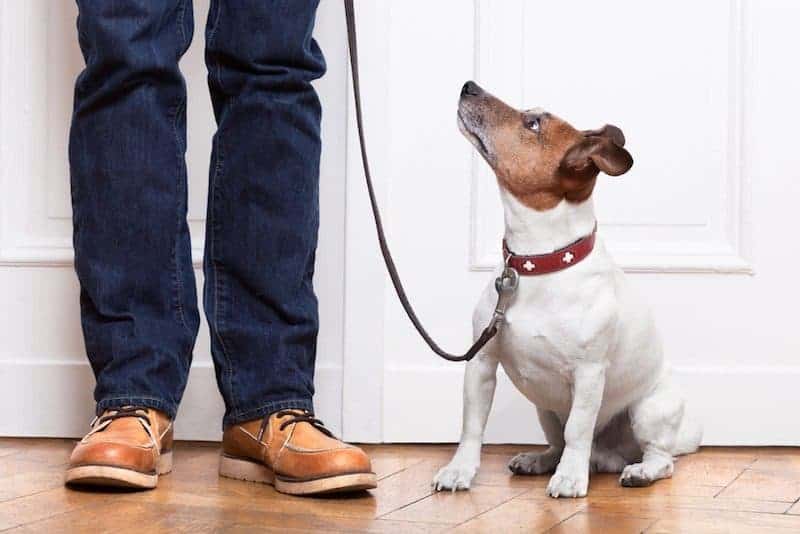
If your dog is difficult to interrupt or doesn’t have a solid response to his name, try having him drag around a lightweight leash clipped to his harness or collar. When you notice him showing signs of marking, you can pick up the leash and quickly yet gently guide him away from the spot.
Additionally, a leash can be used to help you keep tabs on him when he’s free around the house. You can hold it, step on it, or hook the handle under the leg of the chair you’re sitting in (so long as that chair isn’t at risk of being marked).
Letting him drag the leash around all day ensures that it’s always there for a prompt interruption. There’s no time to clip the leash on him in the moment, so it’s best to have him wear the leash like a uniform.
Just be sure that you “leash-proof” your living area first – you don’t want his leash getting caught on a chair leg or something. This could lead to injury or domestic chaos.
There are leashes for available for a variety of scenarios. You can pick up a short leash or tie down if that best suits your needs or go with a really, really long leash to provide more freedom.
Reward Incompatible Behaviors
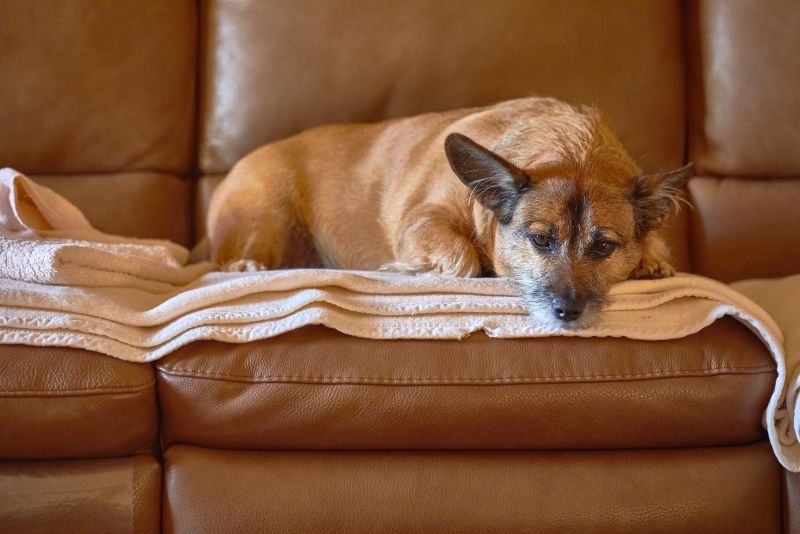
Think about what you do want your dog to do in the rooms and spaces that he tends to mark. You obviously don’t want him lifting his leg, but what are some appropriate behaviors you’d like to see him do? Lay on his dog bed? Relax in his open crate? Chill out on the rug or couch?
Behaviors that are rewarded are repeated, so reinforce your doggo for doing desirable behaviors around the house. It helps to keep some treat jars scattered throughout your home, or wear a treat pouch, so you can readily reinforce him.
Work on some mat training to teach him how to hang out calmly around the house.
Try a Belly Band or Underwear
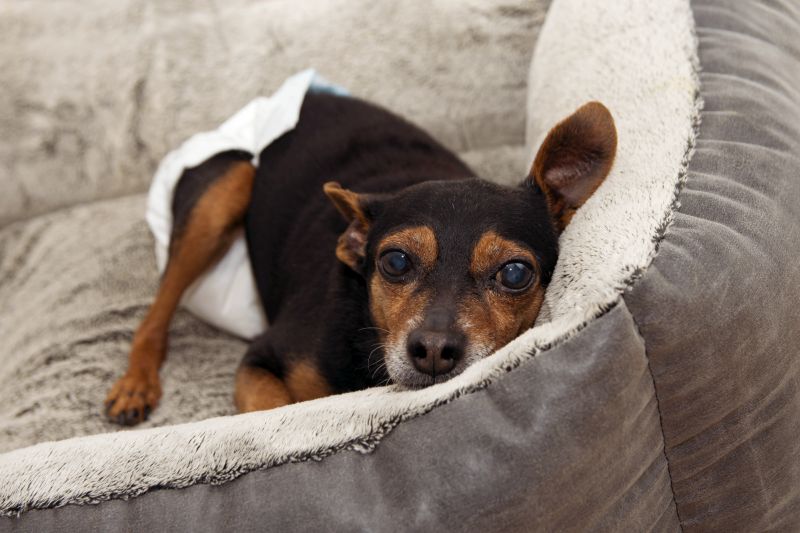
For a male marker, consider a belly band, which is a strip of fabric that goes around his belly, covering his penis. If you have a female who marks, a pair of doggy panties will accomplish the same goal.
Some dogs won’t urinate while wearing one, however, if a dog does pee in a belly band or panties, it will absorb the urine and protect your home.
Belly bands and underwear don’t train your dog not to mark, but they are tools to manage the behavior while you work on a training plan. These garments should be changed out once they’re dirty, or skin irritation or infection can develop.
Lower Your Dog’s Stress
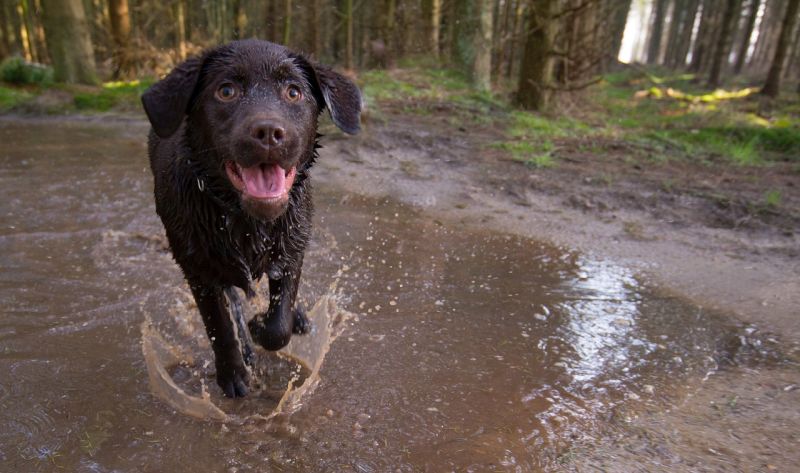
Stress and anxiety can trigger marking indoors. By reducing your pup’s overall stress level, he may no longer feel compelled to share his feelings in the form of a spritz of pee in the house.
This might include providing more opportunities where he can frolic and sniff in nature, which can help him decompress. Or perhaps you increase enrichment activities that provide outlets for his natural canine behaviors like chewing, shredding, and digging. Maybe a quiet, comfy space where he can hang out when your home environment becomes stressful is what he needs.
Additionally, medication and supplements from your veterinarian can be a valuable part of a stress reduction plan for your pooch.
Consider Spaying or Neutering

In some cases, spaying or neutering can eliminate a dog’s desire to mark. However, it’s not a guarantee. Your dog’s marking habits might remain the same after being neutered.
If you’re planning on spaying or neutering your dog anyway, then this could be a good option. Best case scenario, your dog is now neutered and no longer a marker. Worst case scenario, your dog is neutered, but the marking persists.
For those who are weighing the pros and cons of neutering, you may want to try out some of the other strategies first, saving neutering as a last-ditch effort to stop the marking. Just remember, it’s not a surefire solution.
The smell of urine may encourage your dog to pee in that spot again.
To end your dog’s marking, first, get rid of the scent. Overlooking this step will sabotage your training efforts.
You can utilize a UV light urine detector to detect any urine stains and to check if your cleanup job was effective.
How to Stop a Dog from Marking in the House: FAQ

Still have questions about stopping your dog from marking in the house? We’ll try to help by answering some of the most frequent ones below!
Why is my dog marking in the house?
Marking can be triggered by a number of reasons including health issues, anxiety, hormones, and changes in household social dynamics. Taking note of the circumstances surrounding your pup’s marking behavior can help you identify possible triggers.
What deters dogs from marking?
Blocking a dog’s access to the spots he likes to mark is an effective way to deter marking. Use gates, pens, and crates to make it impossible for him to mark. Additionally, some dogs won’t mark in areas where they eat and play. You may deter marking by changing your pup’s association with those locations by feeding, training, and playing with him there.
How do you get a dog to stop peeing in the house in the same spot?
The first step to spotting repeated marking in the same spot is to completely remove the scent of urine.
Then you’ll need to supervise your pup when he’s loose in the house, interrupting and redirecting him at the first indication that he’s about to mark. When you can’t monitor him, use management, such as leashes, gates, and crates, to prevent him from lifting his leg.
Can you train a dog to stop marking in the house?
Yes, with consistent supervision and management, it is possible to train a dog to stop marking indoors. Reinforcing desirable behaviors, such as laying on a dog bed and coming when called, can also help eliminate marking in the house.
Marking indoors is a frustrating and stinky problem. The sooner you can step in and address the issue, the faster you can stop it altogether. The tips we’ve shared here will give you a leg up on your dog’s indoor leg-lifting. Don’t wait to implement a management and training plan, or to seek professional guidance from your veterinarian or a behaviorist.
Do you know what triggers your dog to mark indoors? How long has your pup been marking?
Tell us about your doggo’s marking habit and ask any questions in the comments. If you try out any of the tips, we’d love to hear about it!


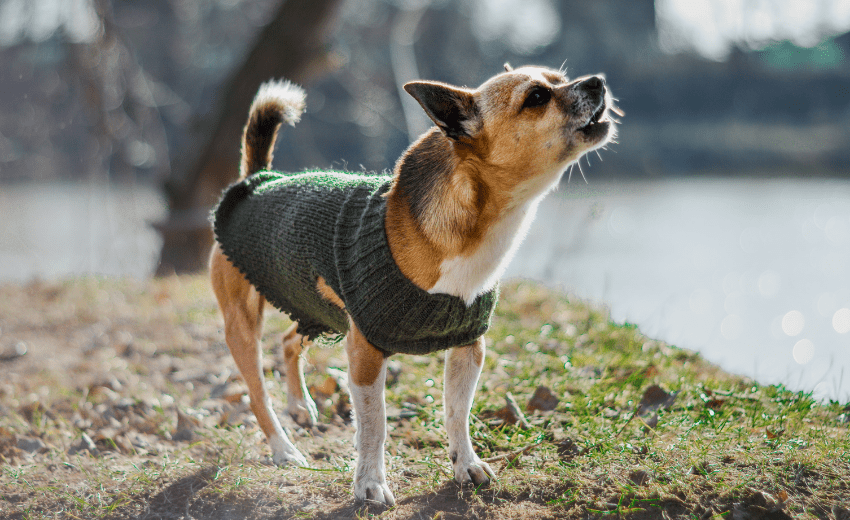


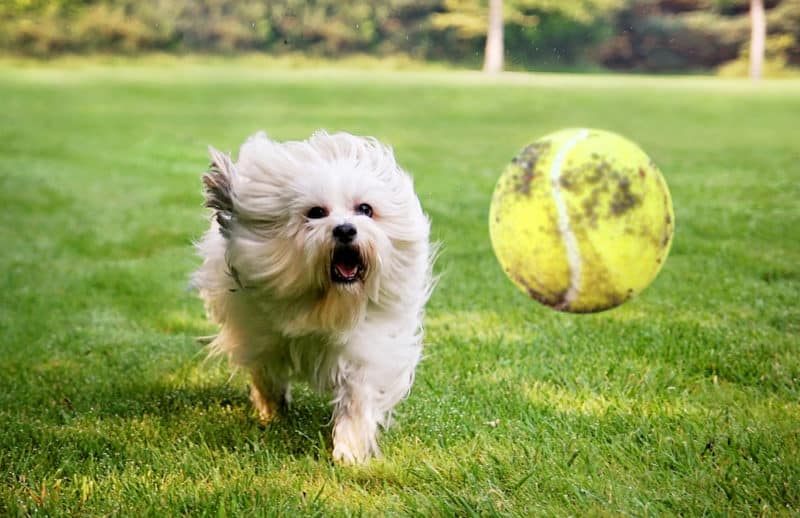
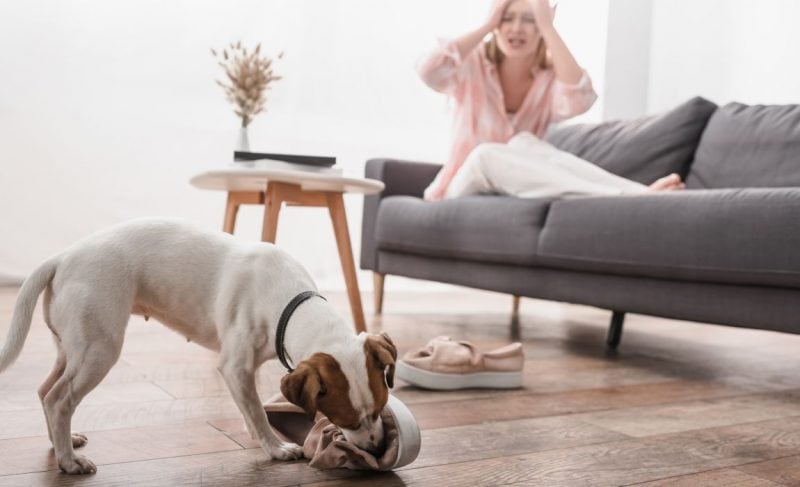
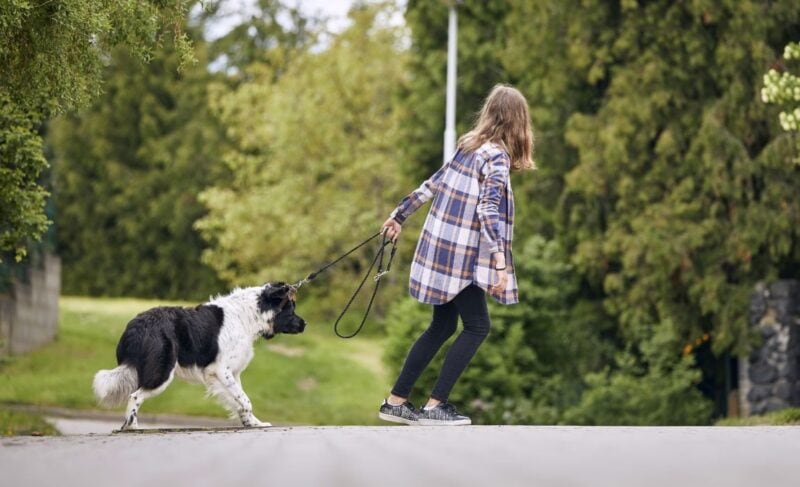
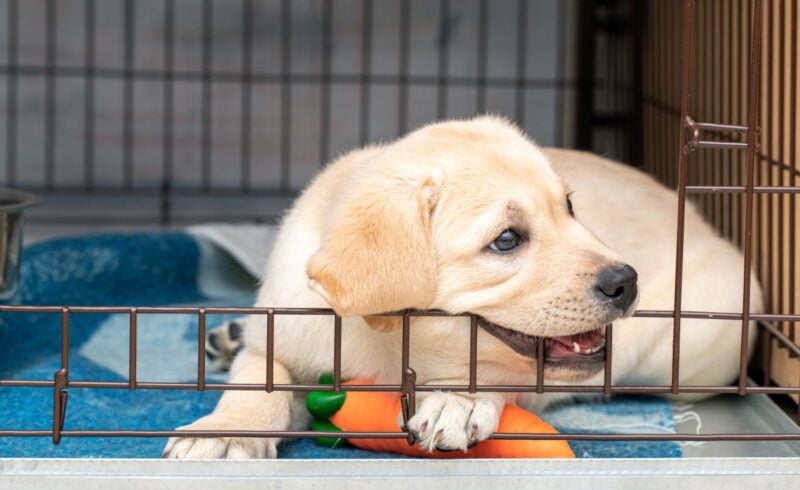
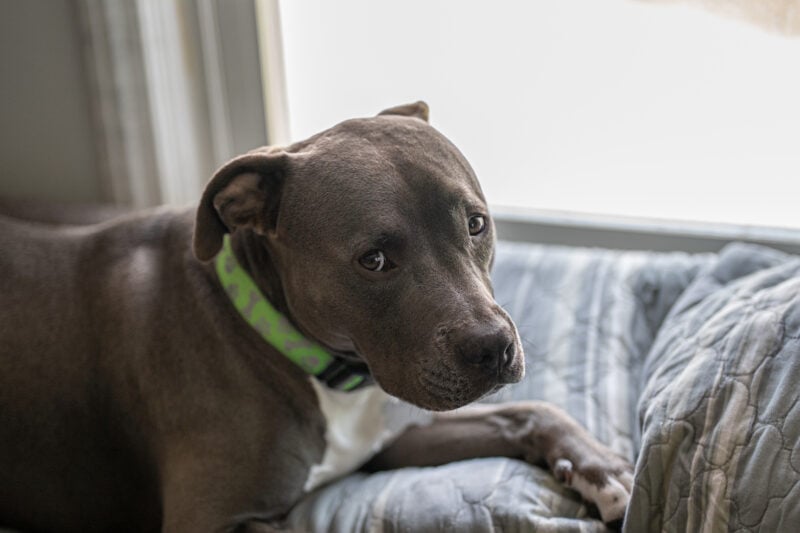


Leave a Comment